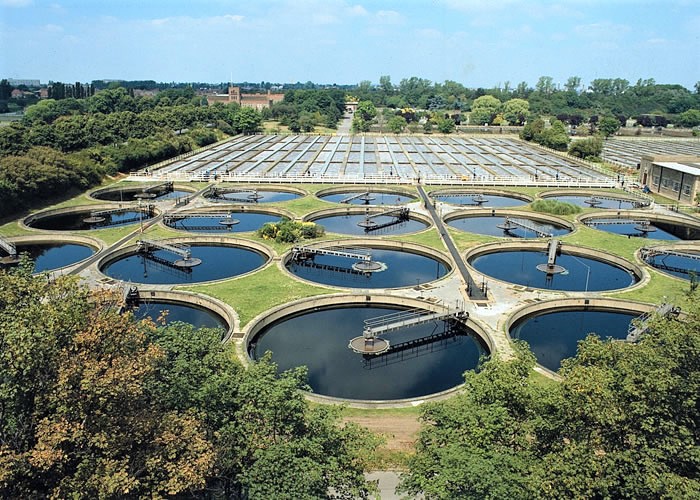
UPDATED 28/03/2019 with details, comment.
Major British utility Northumbrian Water Ltd (NWL), which supplies water and waste water services to 4.4 million people, is seeking help with a planned migration of on-premises infrastructure to the public cloud, it said today.
The company, which provides 1.1 billion litres of water daily via its 25,678 kilometres of water mains, has settled on a multicloud structure including public cloud deployments on AWS, Microsoft Azure and Oracle Cloud, it said.
It has allocated £4.6 million for migration support under a new framework agreement.
John Edwards, Cloud Transformation Programme Manager, at Northumbrian Water, told Computer Business Review: “Our strategy proposes a multi-year journey in our incremental and matured approach to Cloud Services adoption. ”
“The target is to work across multiple public clouds add we ran a public cloud partner framework procurement process at the end of 2018 and that framework now includes Microsoft Azure, Oracle Cloud Services and Amazon Web Services.”
“Our existing workload portfolio is spread over Microsoft and Oracle core technology platforms across two Data Centres, with approximately 350 physical servers, 1,000 virtual machines, and supporting in excess of 150 business applications and services.”
Scale of the Challenge
Following the conclusion of the applications assessment activity across the data centres the company has identified Public Cloud IaaS and PaaS services to support the following, Edwards told Computer Business Review.
Current Microsoft Technologies
- MS SQLServer 10, 11, 12 / 2000,08,12,14,16
- SharePoint 2010, 2013
- MS Internet Information Server (IIS) 6, 7, 7.5, 8
- .NET 3, 4 & ASP
- Windows Server
- VMware & Hyper-V
- Citrix XenServer & XenApp (6.5)
Future Mode of Operation (FMO) – Azure
- SQL Database (PaaS), SQLServer (IaaS)
- Web Apps, Containers
- IaaS (Compute, Storage, Network)
- Analytics & BI
- SharePoint Online (Office365)
- OneDrive for Business (Office365)
Current Oracle Technologies
- Oracle DB 10, 11, 12
- Oracle Forms & Reports 11
- Oracle E-Business Suite HR & Fins 12.1.3
- Oracle WebLogic (inc ADF) 10 &11
- Oracle SOA Suite 12.1.3
- Oracle Application Server (OAS) 10
- OBIEE 11 & 12
- ODI 11 & 12
- Discoverer 11
Future Mode of Operation (FMO) – Oracle Cloud Infrastructure
- DBaaS (inc Autonomous – Transaction Processing & Data Warehouse)
- Java Cloud Services (JCS)
- SOA & Integration
- Analytics & BI
- IaaS (Compute, Storage, Network) & Containers
The company is also looking for “a level of Amazon Web Services Partner capability”.
“Whilst the Cloud Transformation programme scope is 114 applications migrating to Azure and Oracle Cloud Services, some Amazon partner capability may be needed,” Edwards said.
He added: ” AWS will also be an option – together with Azure and Oracle – for new workloads, complex requirements, simple IaaS, and innovation requirements”.
Northumbrian Water has allocated some £3 million for the migration to Oracle’s public cloud and £1.6 million for the migration to Microsoft Azure.
It is setting up a framework notice to attract services companies to support it with the move, a contract notice showed today.
See also: Thames Water: Handle Our Data Properly, Get £10 Million
“NWL envisage cloud migration to be an incremental ‘wave’ approach delivering early value, whilst being prepared to change along the way according to prevailing business benefits, technical complexities and new cloud features” the framework notice shows.
Both contracts are for an initial 24 months with the possibility of extension.
Requests to participate need to be in by April 10, 2019.
Northumbrian Water Increasingly Tapping Diverse Data Sets
Like many utilities, the company has been pushing to tap large data sets in a bid to drive efficiency.
Its Innovation Festival in July 2017 brought 60 data scientists together as part of the event, to spend three days crunching 55GB of data from a wide variety of sources, ranging from existing information on leakage and ground structure to road traffic statistics and Second World War bombing records.
In its annual report, Northumbrian Water said: “We continued working with companies PA Consulting and 1Spatial after the Festival, to develop the idea.”
“We are now starting work on creating a ‘heat map’ that will direct the most effective resources more efficiently, prioritising the finding and fixing of the biggest leaks.The first stage of the work involved PA Consulting establishing the most important variables that have an effect on leakage, such as soil types and the age of existing pipes, so that these can be used to identify target areas. A model will then be developed by 1Spatial that will inform activity. ”
Read this: Super Sewer Seeks Software Support






